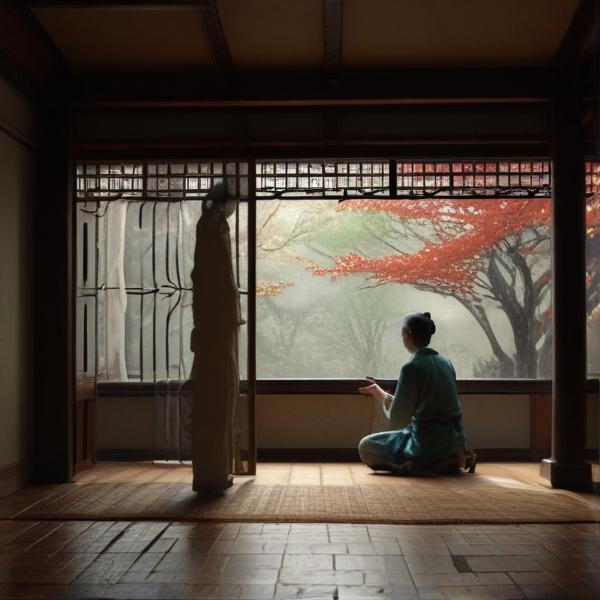基本信息 (Basic Information)
含义与用法 (Meanings & Usage)
中文核心释义 (Core Chinese Meaning): 竹子,一种中空、有节的草本植物,常用于建筑、手工艺等。
英文核心释义 (Core English Meaning): Bamboo, a hollow, jointed grass often used in construction and crafts.
象形意义 / 为何这么写 (Pictographic Meaning / Writing Rationale)
文言文释义 (Classical Chinese Meaning)
与现代意义相近,主要指竹子,有时也指制竹器具。Similar to modern meaning; mainly refers to bamboo, sometimes refers to objects made from bamboo.
深入学习 (In-depth Study)
字源故事 (Origin Story)
字形演变 (Character Evolution)
常用词语和例句 (Common Words & Examples)
竹子 (bamboo)
熊猫喜欢吃竹子。
Eng: Pandas like to eat bamboo.
竹笋 (bamboo shoot)
春天是吃竹笋的好季节。
Eng: Spring is a good season to eat bamboo shoots.
竹林 (bamboo forest)
我们在竹林里散步。
Eng: We walk in the bamboo forest.
相关成语 (Related Idioms)
胸有成竹
Meaning: To have a well-thought-out plan (literally: to have the whole bamboo in one's chest)
多语言翻译 (核心释义) (Translations (Core Meaning))
- French: bambou
- German: Bambus
- Spanish: bambú
- Italian: bambù
- Portuguese: bambu
- Russian: бамбук
- Arabic: خيزران
- Persian: نی بامبو
- Dutch: bamboe
- Polish: bambus
- Vietnamese: tre
- Ukrainian: бамбук
视频学习资源 (Video Learning Resources)
通过以下链接在热门视频网站搜索 "竹" 的更多讲解:
Search for more explanations of "竹" on popular video sites:
- 在 Bilibili.com 搜索 "竹 字源 说文解字" (Search on Bilibili)
- 在 YouTube.com 搜索 "竹 character origin etymology" (Search on YouTube)
网络参考 (Web References for "竹") ()
网络内容摘要 (Web Content Summary):
```html核心含义与象形起源:“竹”是一个象形字,源于古代的甲骨文和金文,其最初的字形像两根高耸的竹子。最基本的含义是“竹子”,在六书中属于象形字范畴。 Core Meaning & Pictography: "竹" (zhú) is a pictographic Chinese character. Its earliest forms in oracle bone and bronze inscriptions resemble two upright bamboo stalks. It primarily means "bamboo" and is classified as a pictograph in Chinese character formation (liù shū).
文化背景与趣闻:竹子在中国文化中象征正直、坚韧和谦逊,经常出现在诗词、绘画等艺术中。古时还被用来制作竹简(早期的书写材料)和竹制乐器。 Cultural Background: Bamboo symbolizes uprightness, resilience, and modesty in Chinese culture, frequently appearing in poetry and art. In ancient times, it was used for making bamboo slips (early writing material) and bamboo musical instruments.
-
常用成语:势如破竹(比喻势不可挡)、胸有成竹(比喻做事有准备)、竹篮打水(比喻白费力气)。 Common Idioms: 势如破竹 (unstoppable momentum), 胸有成竹 (to have a well-thought-out plan), 竹篮打水 (to waste one’s effort).
-
易混淆点:“竹”字常用于“竹简”“竹笛”等词,与其他植物字(如“林”“木”)区分开来。 Possible Confusion: "竹" often appears in words like “竹简” (bamboo slips) and “竹笛” (bamboo flute); it's distinct from character for trees (林, "lín") or wood (木, "mù").
著名诗句:“竹外桃花三两枝,春江水暖鸭先知。”——借竹渲染诗情画意。 Famous Verse: "Amid the bamboo, just a few peach blossoms; the ducks know when the river warms in spring." — Bamboo is often used to evoke poetic imagery.
``` **说明(Note):** 以上就是关于“竹”的核心知识总结,如果需要更详细的信息(如更多成语或文化背景),可参考更权威的中文资料。竹字形演变字源_汉字「竹」_竹的甲骨文_竹的金文_金文编_甲骨文编
篆文承自戰國文字,為使其整齊化,用垂直的線條表現,仍像竹葉之形。字經隸書,形變作 ,稍失其形;作 則遠離原形,而楷書即沿之而定體。以上諸形,都據具體的實象造字。在六書中屬於象形。 汉字:「竹」 字形演变 字源演变 乙4525反(甲) 佚668(甲)
汉字"竹"的起源、演变过程-汉字字源辞典
【形义】竹是一个象形字。它的金文像两根扎地生长的竹子。本义是"竹子",引申指"竹简"和"竹制管乐器"。 【谜语】个个变了样。 【成语】势如破竹︱胸有成竹︱竹篮打水 【谚语】竹有低头叶,梅无仰面花。 【歇后语】竹竿撑排——捅到底 【名句】竹外桃花三两枝,春江水暖鸭先知。
更多图片 (竹 More Images) ()
